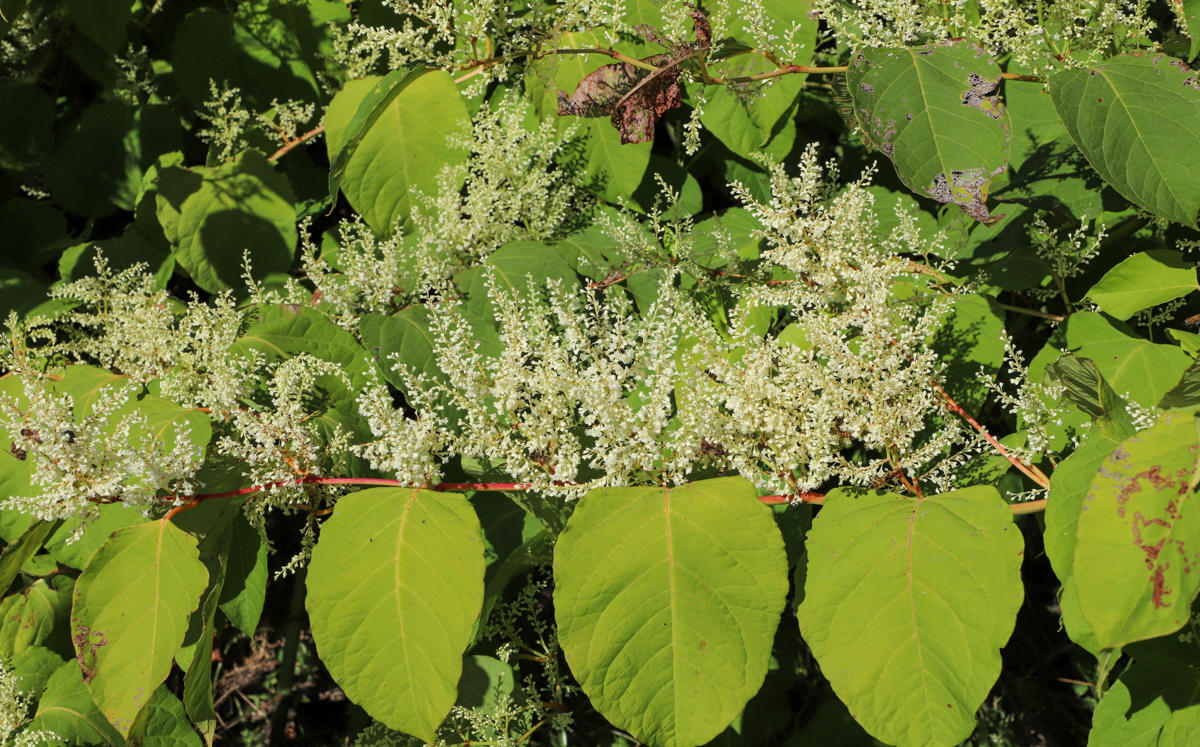
Bohemian knotweed, a cross between Japanese knotweed and giant knotweed. Photo provided by Roger Becker.
Background
One of the largest vascular plants on earth is a single, female Japanese knotweed plant in the United Kingdom that has caused great environmental, economic, and property damage. This is despite control efforts of around $2 billion a year. Genetic analysis helped researchers in the UK determine the single, clonal origin of their problem and how the plant was spreading asexually through the movement of stem and rhizome fragments.
MITPPC researchers looked to DNA for a better understanding of the invasive knotweed populations here in Minnesota. They focused on Japanese knotweed (Polygonum cuspidatum, also called Fallopia japonica) and giant knotweed (P. sachalinense), along with their hybrid, Bohemian knotweed (P. x bohemica).
By way of a new, low-cost genetic analysis commonly used in human disease research, Smith’s team determined the genetic diversity of Minnesota knotweed populations and identified genes linked to invasive traits or herbicide tolerance.
Research questions
- What is the genetic diversity of knotweeds in Minnesota—what species and hybrids are in the population?
- Are Minnesota knotweeds spreading asexually, through stem and rhizome propagation, or sexually, through seed reproduction?
- What markers for herbicide sensitivity and tolerance will a genome-wide study of invasive traits reveal?
Outcomes
Smith’s team confirmed the presence of 3 distinct knotweed species and their hybrids in Minnesota: P. japonica, P. sachalinensis, and P. x bohemica. They also confirmed a previously unreported species, Polygonum cuspidatum var. compacta. Their research showed that all knotweeds have the potential to grow through Minnesota and into colder climates.
Seed production of knotweeds appears to be mainly asexual and facilitated by human activity. Data indicates that seed dispersal will become more prevalent, increasing the diversity of the species and the probability of resistance to herbicides and other management practices.
In terms of management, the researchers recommend removing all landscape plantings of the knotweed cultivar “compacta” that may set seed to reduce the hybrid production of the more vigorous Bohemian knotweed (P. x bohemica). Mechanical or hand-removal of above-ground biomass of knotweeds is most effective in late June through July, with at least one additional removal early September.
The team completed trials with herbicides to determine which are most effective and when. Herbicides that rely on translocation to underground roots and rhizomes are most effective in August through mid-September, assuming there has been adequate moisture to support plant growth.
Publications
- Genetic Diversity, Structure, and Cold Hardiness of Invasive Knotweed (Fallopia spp.) in Minnesota (thesis by Dallas Drazan, 2022)
- History of Knotweed (Fallopia spp.) Invasiveness (Weed Science, 2021)
Outreach
- Midwest Invasive Plant Network webinar series, 2024
- Minnesota Shade Tree Short Course, 2023
- Upper Midwest Invasive Species Conference, 2022
- American Society of Horticultural Science